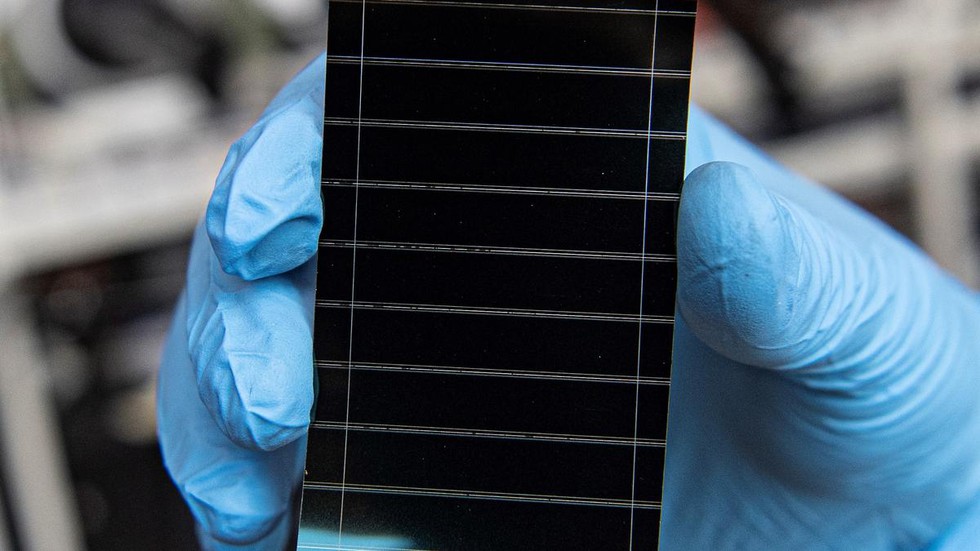
Perovskite Solar Cells

22.04.2025
Perovskite Solar Cells
|
For Prelims: What are Perovskite Solar Cells (PSCs)? Carbon-Based Perovskite Solar Cells (CPSCs) |
Why in the news?
Recently, scientists have developed a water-based, non-toxic recycling method for PSCs, avoiding the need for hazardous solvents.
What are Perovskite Solar Cells (PSCs)?
- Perovskite solar cells (PSCs) are a type of photovoltaic (PV) technology that uses crystal structures called perovskites for converting sunlight into electricity.
- These crystals share the structure of the mineral calcium titanium oxide (CaTiO₃) and can be engineered to possess a wide range of optical, electrical, and semiconducting properties.
- The general chemical formula of a perovskite compound is ABX₃, where 'A' and 'B' are cations, and 'X' is an anion.
- They offer high power conversion efficiencies at a lower cost than traditional silicon-based PVs, but they suffer from shorter lifespan and stability issues.
Carbon-Based Perovskite Solar Cells (CPSCs)
- CPSCs are the first indigenous perovskite-powered niche product developed in India, aimed at improving device stability and reducing fabrication costs.
- However, humidity and thermal stress remain challenges for widespread commercialization.
- Indian scientists have enhanced thermal stability by incorporating Guanidinium iodide (GuI) and improved moisture resistance through surface passivation using 5-amino valeric acid iodide (5-AVAI).
How the New Recycling Process Works?
- Sodium acetate is added to the recycling solution. Its acetate ions bind with lead ions, forming lead acetate, which dissolves easily in water.
- Sodium iodide and hypophosphorous acid are then introduced.
- Sodium iodide helps in regenerating degraded perovskite crystals.
- Hypophosphorous acid acts as a long-term stabilizer for the water-based recycling solution.
- Scientists also used ethanol and ethyl acetate to dissolve other cell components, allowing them to recycle and reassemble each layer of the solar cell.
Source: The Hindu
With reference to Perovskite Solar Cells (PSCs), consider the following statements:
1. These are a class of photovoltaic technology that utilize crystals with a structure similar to the mineral calcium titanium oxide (CaTiO₃) for solar energy conversion.
2. These perovskite materials can be engineered to exhibit diverse optical, electrical and semiconducting properties.
Which of the statements given above is/are correct?
A.1 only
B.2 only
C.Both 1 and 2
D.Neither 1 nor 2
Answer C